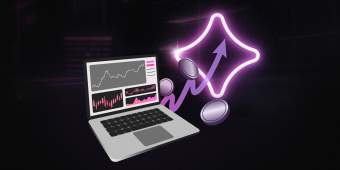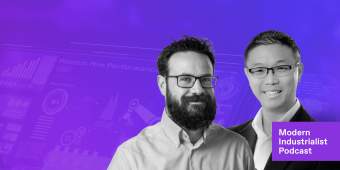Industry 4.0
For over 20 years, we've empowered manufacturing and logistics companies to embrace smart factory solutions.
Whether you call it Smart Manufacturing, Industrial Automation, Industry 4.0, or the Titanium Economy, the game has changed for the industrial sector. There is an unprecedented opportunity to gather, synthesize, and act on data today.
TXI is at the forefront of helping manufacturing and logistics companies adopt advanced tech (digital twins, augmented and virtual reality (AR/VR), cloud computing, data analytics, and artificial intelligence (AI)) to improve their operations and transform their companies.
We try to identify ways to bring incremental value into the system through…
Greater visibility into operations
Greater connectivity across the supply chain and/or into partners’ operations
Efficiency gains in the production process
Product quality, safety and security enhancements
Employee safety and support
How we can help
Drafting use cases, modeling how business operations can improve, developing process maps, and forecasting where the best ROI might be found
Examining where data is available, where greater insight would be valuable, and how data might be transformed to produce actionable recommendations or dynamic automated responses
Rapid advancements in wireless sensor technology have created entirely new opportunities for companies seeking to modernize their industrial operations and rapidly respond to business changes. From the temperature and air quality sensors that drove the early innovation in environmental monitoring to today's ability to capture maintenance issues before they happen, computer monitoring has evolved into a predictive system, anticipating and preventing problems before they disrupt operations.
How we can help
Applying TXI’s design principles to break down complex measurement challenges into executable and scalable sensor and device deployments
Recommending an optimal buy vs. build strategy for the sensors and devices that will enable the IIoT implementation
Mapping the possible human-hardware interaction points and developing a strategy for where those sensors and devices may need to display information or relay instructions to other components of the system
Developing a hardware lifecycle and replacement strategy that takes into account the durability and useful life of the sensors and devices themselves as well as the machinery and equipment that is being monitored
Sensors embedded in physical equipment collect real-time data on performance and environmental conditions. This enables real-time monitoring and detection of production issues, reducing waste and preventing equipment failure.
TXI is experienced in building digital twins and can help identify the best solution for a given context.
How we can help
Use Case Planning: Explore data volume, frequency, and scale needs for your digital twin.
Optimize Connections: Refine hardware/firmware for efficient data exchange with the digital twin.
Data Flow Consistency: Plan for potential connection issues and ensure data is still sampled effectively.
Secure the Network: Evaluate and implement security measures for devices and data transmission.
In building the applications that handle those refinements, one key consideration for developers is the interoperability and fluidity of the data in question. Why? In most real-world scenarios, the greatest value comes from parsing data from multiple sources: different internal systems made by different manufacturers as well as data from external partners — often in real-time.
How we can help
Developing and implementing the optimal cloud architecture solution
Developing a data management and storage strategy for how to leverage real-time versus historical data
Implementing security and data management best practices
What kinds of things does the UX / UI of IIoT devices need to contemplate?
Onboarding new devices
Setting parameters in devices for what to measure and when to trigger alerts
Grouping sets of devices as having similar settings or tolerances
Setting notifications or escalation protocols for alerts
Automating responses to specific measurement readings or alerts
Setting up data views and reports
Administering system users and setting different access levels
How we can help
Applying TXI’s design principles to identify users' needs from the administrative level to the operators.
Journey mapping from conception to delivery, using data collected by IoT devices, to identify areas for improvement and improve customer experience.
Create a set of flexible and reusable design principles to make Industry 4.0 solutions scalable, interoperable, and easier to maintain
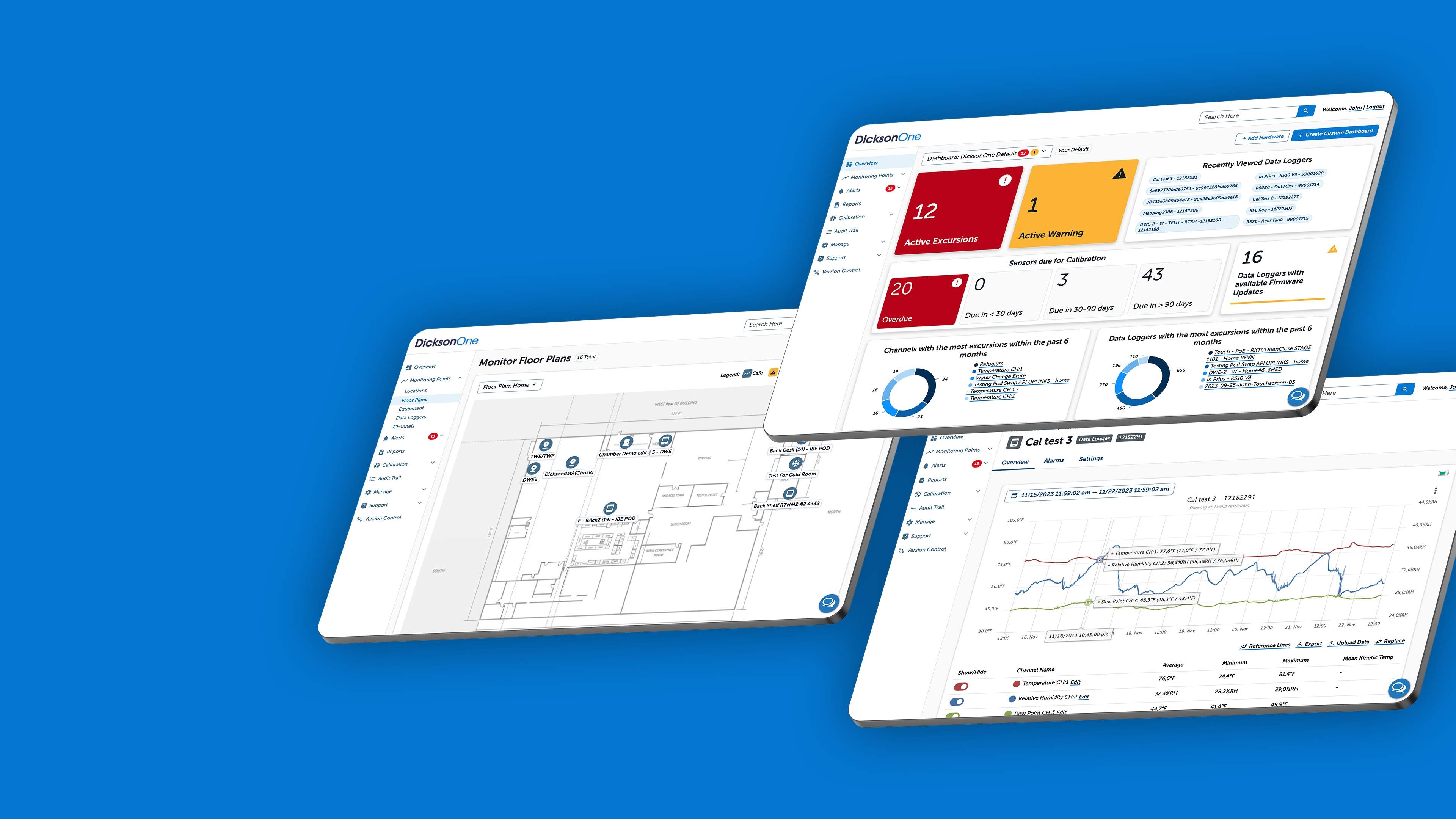
Watch the Dickson story
TXI has really helped Dickson transition from a manufacturing company to a technology company. TXI just greatly expands the collective intelligence of Dickson.
The Modern Industrialist Podcast
Presented by TXI, The Modern Industrialist Podcast is for technology-focused manufacturing and logistics leaders looking to gain a competitive edge with Industry 4.0 transformation.
Join our host, Jason Hehman, as he brings together experts from companies paving the way for the IIoT revolution. Topics will range from advice to success stories, use cases, solutions, and more.
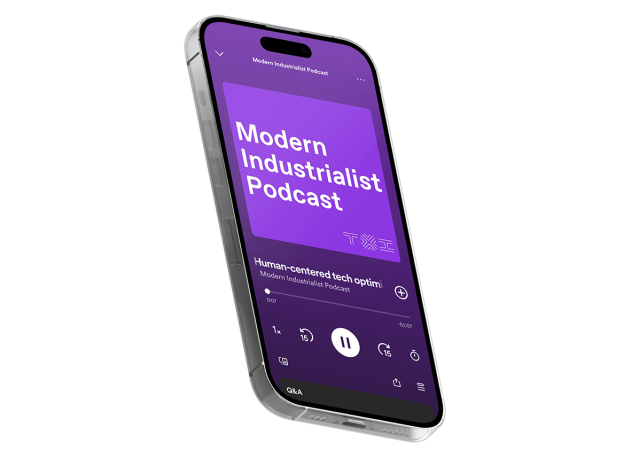
A roadmap to operating a smart factory
Industry 4.0 is revolutionizing manufacturing. Smart factories unlock efficiency, agility, and a path to leadership.
Follow Dickson's example. This environmental monitoring powerhouse used smart factory solutions to achieve success.
Discover the secrets to:
- Innovative smart factory implementation
- Enhanced customer satisfaction
- Streamlined operations
- A thriving company culture
Break down barriers and become a champion of Industry 4.0.
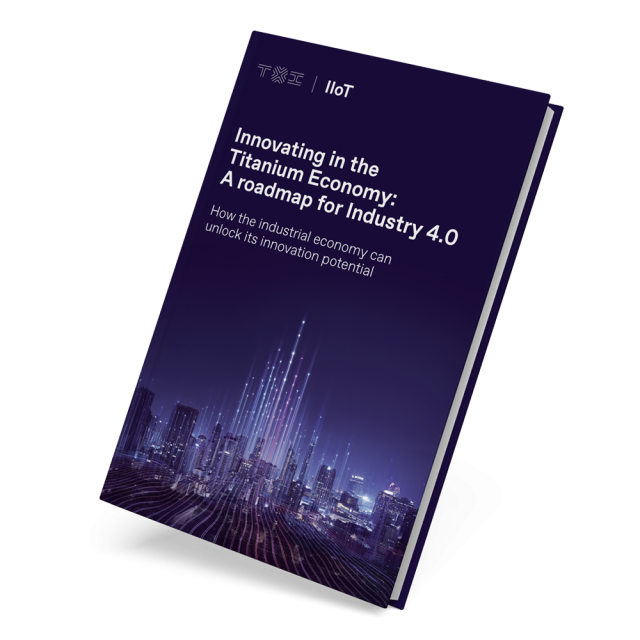
FAQs
-
Why should organizations adopt IIoT?
Industrial Internet of Things (IIoT) helps to increase efficiency, reduce costs, and improve decision-making by providing real-time data and insights into industrial operations. Industrial IoT can also help organizations optimize their production processes by enhancing the overall performance of their industrial systems with the ability to remotely monitor and control them, which can improve safety and reduce downtime. Overall, the use of industrial IoT can help organizations become more competitive and profitable.
-
What is the role of IT in Industrial IoT?
IT provides the necessary infrastructure, software, and networking capabilities for connecting and analyzing data from various industrial systems and pieces of equipment. This includes implementing and maintaining communication protocols to enable devices to connect to the internet and transmit data. Many organizations partner with TXI to develop and deploy software applications that can process and analyze the data collected from the industrial equipment, such as predictive maintenance and real-time monitoring systems.
-
What are some examples of IIoT?
IIoT uses sensors and connected devices to monitor and optimize production processes and even to track parcels while shipping. For example, sensors could be placed on machinery to collect data on temperature, vibration, and other measurable parameters. This data could then be analyzed in real time to identify potential issues, such as equipment malfunction or inefficiency, and trigger automated responses, such as maintenance or adjustments so service engineers can address the potential failure prior to a major malfunction. This can help increase production efficiency and reduce downtime.
-
What is Industry 4.0?
Industry 4.0 is all about connecting the digital and physical worlds. In today’s time, most of the manufacturer’s key assets are connected to the physical world. The workers, machines, tools, and inventory drive both the production process and the end product that customers use every day. But the emergence of advanced technologies allows manufacturers to use data produced by various physical assets to drive valuable insights. These technologies will enable the construction of new solutions to some of the oldest and most complex challenges manufacturers face in growing and operating their businesses.
Internet of things (IoT) is transforming manufacturing for suppliers and customers. It connects the physical world, like machines and tools, with the digital world on the shop floor and in the back office. This drives the production process and creates the end products that customers use every day. IoT connects these things and their environments to a network so that instant, accurate information can be shared. Making sense of this data can help manufacturers build and deliver products faster and plan more efficiently and effectively.
-
What is Design Thinking related to the Industrial Internet of Things?
Design Thinking is a methodology that helps organizations design products, services, and experiences. In the Industrial Internet of Things (IIoT) context, Design Thinking helps organizations design solutions considering the complexities of connected systems and how they interact with people and the environment. The design process allows for an iterative approach that encourages creativity and innovation, enabling organizations to find meaningful solutions to address their challenges.
-
What is the titanium economy?
The Titanium Economy is a term coined by McKinsey & Company which refers to the potential for greater economic value creation enabled by digital technologies and the Internet of Things. This term was coined to highlight the potential for organizations to design and create new products and services that are more efficient, cost-effective, and agile. The Titanium Economy also refers to the potential for large-scale productivity gains due to enhanced data sharing, automation, and connectivity enabled by IoT technologies.
-
What is the Internet of Things (IoT)?
The Internet of Things (IoT) refers to an interconnected network of physical objects (or “things”) that are embedded with sensors, software, and other technology for the purpose of collecting and exchanging data. This data can then be used to trigger automated actions, inform decisions, and improve processes. In the industrial context, IoT can enable organizations to design and implement more connected operations that are better able to monitor conditions, optimize resource utilization, and respond quickly to changes in demand.
-
How is the Industrial Internet of Things being used in the manufacturing sector?
The Industrial Internet of Things is being used in the manufacturing sector to improve efficiency, reduce costs, and enhance product quality. Through predictive maintenance, organizations can detect equipment malfunctions before they occur and take preventive measures to avoid costly repairs and downtime. Additionally, IIoT-enabled asset tracking solutions can help organizations identify inefficiencies and optimize resource utilization. Smart sensors can be used to monitor product quality and detect defects before they reach the customer, while machine-to-machine communication can enable enhanced data sharing and collaboration. Ultimately, IIoT allows organizations to create greater economic value through improved efficiency, cost savings, and agility of operations.
-
What are the security considerations associated with the Industrial Internet of Things?
Security is an important consideration when implementing IIoT solutions. Organizations must ensure that their systems and data are secure against malicious activity or cyber attacks. This can be done by implementing robust authentication protocols, encrypting sensitive data, regularly monitoring system performance, and deploying security updates. Additionally, organizations should ensure that all users know the importance of maintaining data security and adhering to best practices when working with IIoT systems.
-
How can the Industrial Internet of Things be used for predictive maintenance?
Predictive maintenance is an important application of IIoT that can help organizations detect equipment malfunctions before they occur and take preventive measures to avoid costly repairs and downtime. Through the use of smart sensors, organizations can monitor the performance of their various systems in real time and quickly detect any abnormalities. Additionally, predictive maintenance systems can utilize data analytics to identify trends and suggest timely actions that can optimize productivity and cost savings. Ultimately, predictive maintenance enabled by IIoT allows organizations to create greater economic value through improved efficiency, cost savings, and agility of operations.

Find out how intelligent solutions can accelerate growth for your organization.





